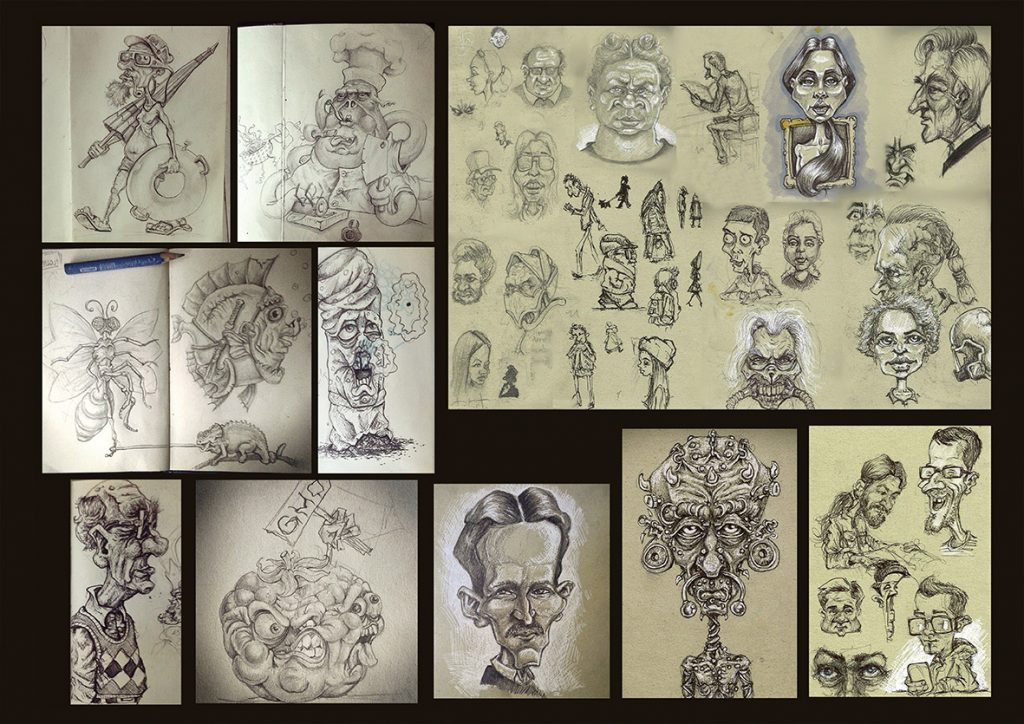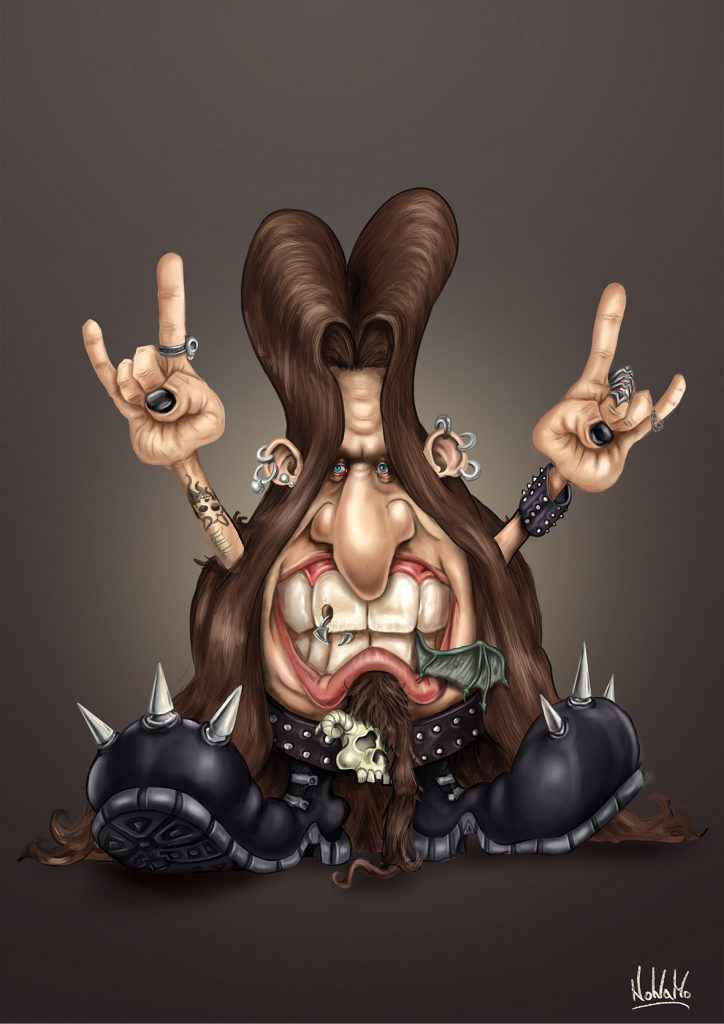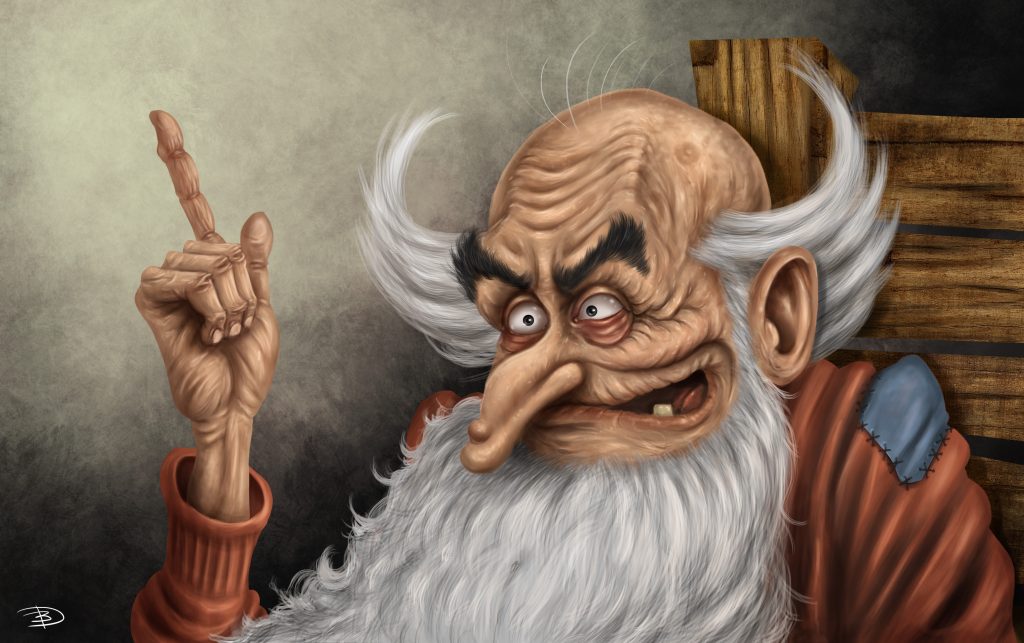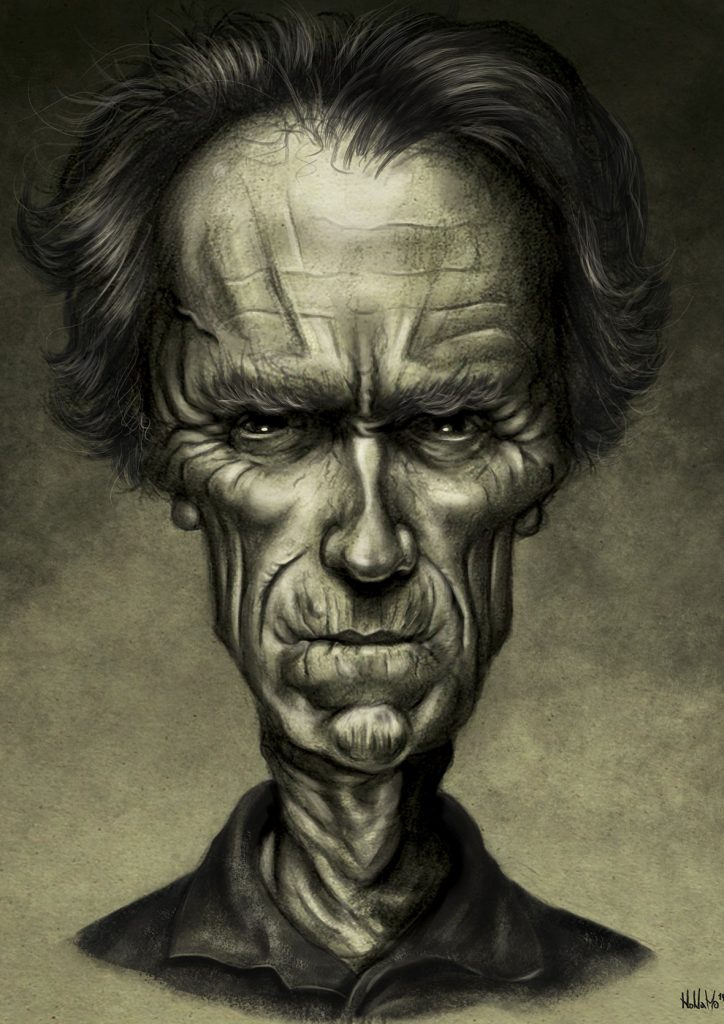
The over exaggeration of physical characteristics in ironic and satirical ways is expressed through the art form known as the caricature, which is still very popular today. In addition to the newspapers, the caricature as an artistic expression of happiness can be seen on the walls of the gallery.
Artwork by: Damir Balić
The over exaggeration of physical characteristics in ironic and satirical ways is expressed through the art form known as the caricature, which is still very popular today. In addition to the newspapers, the caricature as an artistic expression of happiness can be seen on the walls of the gallery.

Gallery walls are decorated with the works of the cartoonist from Sarajevo, Damir Balić. This citizen of Sarajevo, whose education was focused on print and graphic technology, enjoys expressing himself not only through caricature but also through illustration and animation. He explains that, for him, drawing is the easiest form of expression. His talent for drawing was revealed during his childhood and Balić has since worked on further improving his skills.
“During my schooling, I saw that I was more or less able to successfully translate my favorite cartoon and comic book heroes. I began working on illustration more seriously when I bought my first tablet at the end of the high school. Thanks to online workshops and schools, I began to work with less hesitation,” he explains.

Balić sees this form of expression as a medium in which it is desirable, if not crucial, to inject your subjective impressions so that not only are the physical attributes of a person expressed, but so too are elements of the person’s character. Balić says that it is necessary to possess a “skillful eye” in order to experience and transmit someone’s character on to paper. He explains that today it is quite difficult because photographs of people are photoshopped, so it can be a real challenge to see their true characteristics.
“When I draw a caricature, the first thing I notice is at least four Instagram filters that give me the wrong image of a person, mostly the tones of the hair, eyes and skin. It is much easier to work with more photos, especially if they are from different angles,” says Balić.

Considering the fact that caricature as an art form has become widespread as a result of its wittiness and originality, its admirers are becoming increasingly interested in having one in their homes. According to Balić, caricatures have commercial utility, so we often see them in both print and digital media in addition to private ownership. Many of his caricatures were created in response to orders made by the people who love him for his comic books, animation and cartoon work.
Acceptance of caricature by the Bosnian-Herzegovinian public is proven by attendance at Balić’s exhibitions and by the number of orders he receives for his work. Regarding the attitude of the authorities in BiH towards this type of art, Balić is sincere: “I don’t expect state support, so I do not get disappointed when it’s absent. It is very important for me, as an author, to continually progress, to follow the technological trends and to not give up.”

Balić explains that there is a lot of interest among young people when it comes to caricatures, which stems from their love for comic books and comic book heroes. Among them, Balić says, are students of the Academy of Fine Arts, who are trying hard to organize interesting content and workshops from year to year. Some of the more well-known are Beton Fest, the Sarajevo Street Art Festival and the SOS Design Festival.
When it comes to caricatures, it is also possible to encounter negative experiences, as some people get offended by the way they are portrayed. This cartoonist has not experienced such situations very often.

“There is always the possibility to “botch” a drawing, but everything is subject to correction by mutual agreement. Although I don’t need to make many corrections when I draw caricatures, many are necessary in graphic design where you have to be one step ahead of the customer and know what they want better than they themselves do,” he explains.
Success in the arts is an important inspiration, but so are the role models. Balić finds his role models within the works of the masters of classical painting, cartoonists, animators and conceptual artists. From the local artists, he singles out comic strip artists Milenko Tunjić and Dubravko Mataković because their work is the reason he got involved in this business. And still today, he finds inspiration everywhere, but he made his favorite drawings at the very beginning of his career.

“I find inspiration all around me, in the people I meet and that I hang out with, and within numerous Facebook groups and pages about painting and drawing. My favorite drawings are those I created ten years ago, and I am at least a bit satisfied with them, even today,” he says.
For all those who are new to caricature, Balić tells them: “Build your own style, learn and copy from the best and ‘accumulate mileage’ on paper. And what is most important is to not give up, even if it is not the primary source of income at that given moment.”







